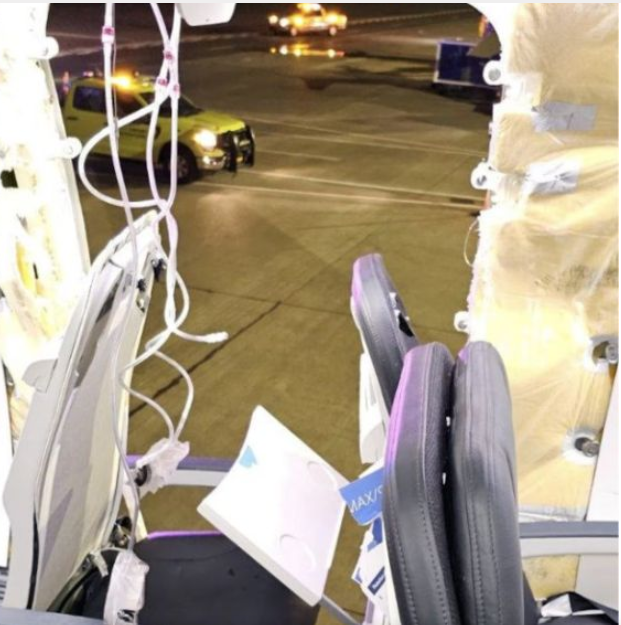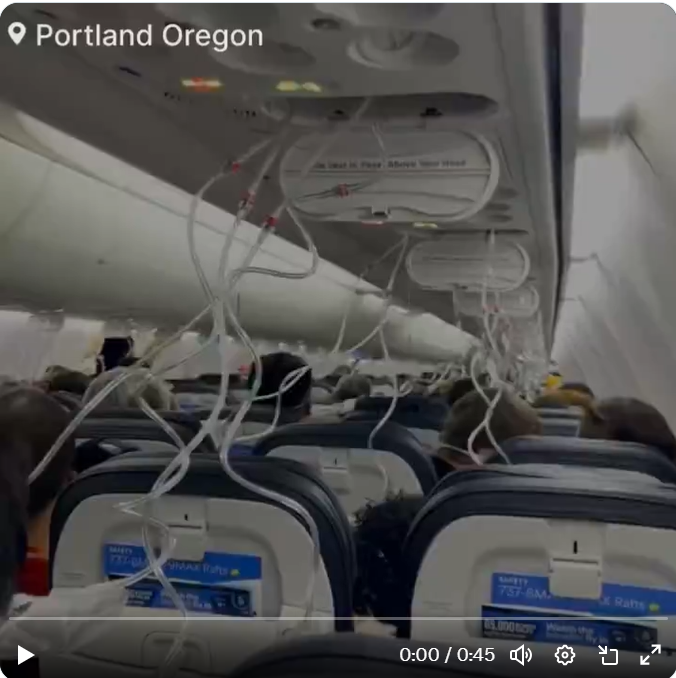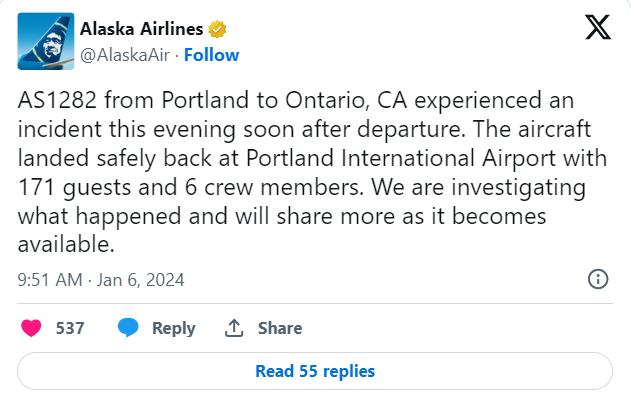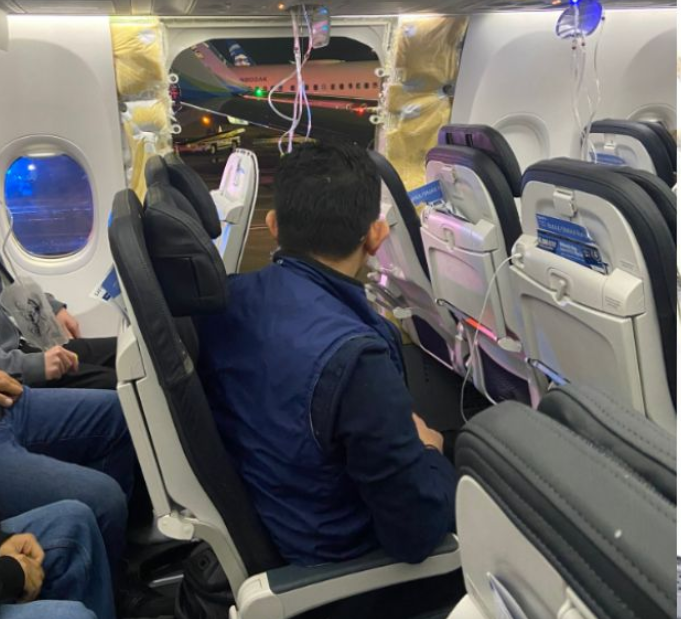
Alaska Airlines Boeing 737 Window Catastrophe Forces Emergency Landing: Mid-Air Nightmare
Alaska Airlines Forced Into Emergency Landing After Boeing 737 Window Shatters, Terrifying Videos Emerge
Alaska Airlines was compelled to execute an emergency landing as distressed passengers shared alarming videos depicting phones and belongings being sucked out of the plane. The incident unfolded on Alaska Flight 1282, a Boeing 737-9 MAX certified by the Federal Aviation Authority in November 2023. A deafening bang was heard at an altitude of 16,000 feet, resulting in a shattered window, decompression, and the plane’s subsequent emergency return to Portland International Airport.

Witnesses on board reported a harrowing scene as a child near the shattered window was pulled by suction, losing clothing in the process. Some passengers lost belongings, including phones, which were ejected from the plane due to decompression. The oxygen masks deployed, and 174 passengers and 6 crew members anxiously awaited the safe return of the aircraft.
Fortunately, no injuries have been reported. Alaska Airlines acknowledged the incident and promised further details. Social media videos captured the calm demeanor of passengers wearing oxygen masks during the safe landing, with the visible hole in the plane’s wall illuminated by Portland’s lights.
The Boeing 737 Max, a previously troubled model, faced renewed scrutiny with this incident. The aircraft model had been grounded for 20 months after fatal crashes linked to a faulty system, MCAS, which was later addressed. Despite Boeing’s efforts to rectify safety concerns, the incident on Alaska Flight 1282 raises fresh questions about the 737 Max’s safety and reliability.
In the aftermath of the harrowing incident on Alaska Flight 1282, concerns about the safety and reliability of the Boeing 737 Max have resurfaced. The model, once plagued by the tragic crashes in 2018 and 2019, underwent extensive changes to its MCAS and other systems before being cleared to fly again in late 2020. The recent emergency landing has reignited discussions about the thoroughness of those modifications and whether the aircraft can truly guarantee passenger safety.
The aviation industry has been closely monitoring the Boeing 737 Max’s return to service, and this incident adds a layer of complexity to the ongoing scrutiny. The internal message from a Boeing employee, referring to the 737 Max as being “designed by clowns who in turn are supervised by monkeys,” echoes sentiments about the need for rigorous oversight and accountability in the aviation manufacturing process.

As investigations unfold, questions linger about the circumstances leading to the shattered window and the potential vulnerabilities that may persist in the Boeing 737 Max. The incident has not only stirred apprehension among passengers but also raised concerns among aviation authorities and industry experts.
Alaska Airlines, in its commitment to transparency, has promised to provide more details about the incident. This pledge underscores the importance of open communication to maintain public trust and ensure that a thorough investigation is conducted to determine the root cause of the window failure.
The aviation community is left grappling with the delicate balance between technological advancements and ensuring the utmost safety for passengers. As the industry collectively reflects on this latest incident, there is an imperative to address any potential shortcomings promptly and comprehensively, ensuring that passenger safety remains the top priority in the ever-evolving landscape of air travel.
In the wake of the Alaska Flight 1282 emergency landing, the aviation industry faces renewed challenges in re-establishing confidence in the Boeing 737 Max. This incident not only amplifies existing concerns but also puts a spotlight on the ongoing efforts to enhance the safety measures of this widely used aircraft.
Passenger testimonies describing the chaotic scene on board, with a child being pulled towards the shattered window and belongings being ejected from the plane, underscore the gravity of the situation. While the quick response and safe landing averted casualties, it has prompted a closer examination of the modifications made to the 737 Max after its prolonged grounding.
The incident raises pertinent questions about the thoroughness of regulatory approvals and the effectiveness of the implemented changes. It also reignites public anxiety surrounding the 737 Max, an aircraft that has a tumultuous history marked by tragedies, investigations, and substantial legal consequences for Boeing.

The aerospace giant’s $2.5 billion settlement in 2021 for concealing critical information about the MCAS system underscores the gravity of the safety concerns associated with the 737 Max. The recent event casts a shadow over the credibility of Boeing’s efforts to rectify past issues and maintain the highest safety standards.
As aviation authorities delve into the specifics of the Alaska Flight 1282 incident, stakeholders across the industry, from regulators to airlines and passengers, anxiously await a comprehensive understanding of the root cause. Transparency and accountability will be crucial in addressing public apprehension and determining the next steps for the Boeing 737 Max.

This incident serves as a stark reminder of the delicate balance between technological advancement and ensuring the safety of air travel. Moving forward, the industry must collaboratively reassess and fortify the safety protocols and oversight mechanisms to uphold the trust of passengers worldwide in the aviation ecosystem.
For the latest updates-click here.


